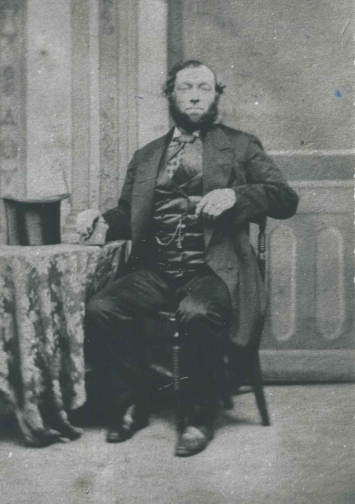
While researching The Cowkeeper’s Wish, we first came upon the term “fur-puller” as we combed through the notebooks of Charles Booth, who sent his social investigators out to document London poverty in the late 1800s. Booth and his workers inevitably visited Red Cross Street in the Borough, where our family lived, and where the people had jobs like bottle washer, rag sorter, seed packer and collar stitcher. There was “fur-puller” too — when Booth’s man spotted such a woman engaged in her work, he jotted in his notebook: “one middle-aged woman pulling fur at her open window, air full of fluff and herself covered with it. Spoke in shaky husky voice, ‘Must do it to live you know!’”
She must have gone to the window for a much-needed breath of air, for according to the 1889 publication Toilers in London, fur-pulling was horrible, hazardous work. Many girls and women earned a living this way, working at home, where they could also look after little ones. They sat on low stools and held hare and rabbit skins between their knees, rubbing the down off with a knife, and then collecting it and returning it to the furrier for use in beds, sofas and pillows; the skins became cloaks and jackets. “The work is very unpleasant. … The down gets into [the fur-puller’s] nose and mouth. Her hair and clothes are white with it. She generally suffers from what she calls ‘breathlessness,’ for her lungs are filled with the fine down, and she is always more or less choked.”
The slightest draft caused the down to fly everywhere, and so windows and doors were usually kept closed, even in the stifling summer months. But the fluff nevertheless found its way into eyes, mouths, and noses, and clung to surfaces in the dank rooms where the work was done. The greasy skins, piled on beds and tables, reeked as they decayed. If the work was tucked away at the end of the day, evidence of it surely remained. In her 1906 work The Soul Market, Olive Christian Malvery called fur-pulling “a wretched, ill-paid, unhealthy trade,” but admitted the fur-pullers themselves didn’t seem bothered. “‘Dust? lor, we don’t mind that! We eats it, drinks it, and sleeps on it!'”

In March of 1888, a coroner’s inquest was held into the death of a baby boy named Frederick Spinks Phillips, just nine months old. His mother was a fur-puller, and worked at home. “The fluffs from the skins being considered as detrimental to the child’s health,” she sent the boy out to be cared for each day by the widowed Elizabeth Nash, who had also worked in fur-pulling but had recently given up the job due to health problems. Nash had been caring for Frederick for about five weeks by the time he died, but she’d found him “troublesome,” according to an account in the London Daily News, and didn’t want to take him anymore. But day after day, Frederick’s mother continued to bring her baby boy so that she could carry on with her trade at home.
Nash testified that on the day of his death, Frederick had seemed ill. She’d put him to bed and gone out to the pub for some rum, though not enough to make her drunk. “On returning home, she saw the child was in a fit. She dashed some cold water in his face, but as that did not bring him to, she put him into a pail of cold water with his clothes on to see if that would revive him.” If she had done wrong she was sorry, she told the jury; she did not intend to drown the child, though she admitted, upon further questioning, that the baby had been “dipped in head-first.”
The constable called to the scene deduced she had been drinking. Two other witnesses said yes, she had drunk, but she was not intoxicated until much later that day, hours after the death had occurred. A doctor testified that little Frederick had died from “dentition convulsion” — yes, teething — rather than drowning, but that “the plunging of the child into cold water” had certainly accelerated his death. In the end, the jury returned a verdict of “death by misadventure,” and the coroner severely censured Elizabeth Nash.
Did she go on to care for other children? And did Frederick’s mother continue with her work? The article doesn’t say. But it does tell us that the coroner found this “one of the most extraordinary cases he ever remembered.”
♦
Sources
- “Walk with H. Barton.” George H. Duckworth’s Notebook, District 31, May 1899, Charles Booth’s London, LSE Library.
- Toilers in London. “British Weekly” Commissioners, 1889.
- “Misadventure or Manslaughter: An Extraordinary Case.” London Daily News, 15 March, 1888.
- The Soul Market. Olive Christian Malvery, 1906.
- Chavasse’s Advice to a Mother on the Management of Her Children. Henry Pye Chavasse, 1898.





